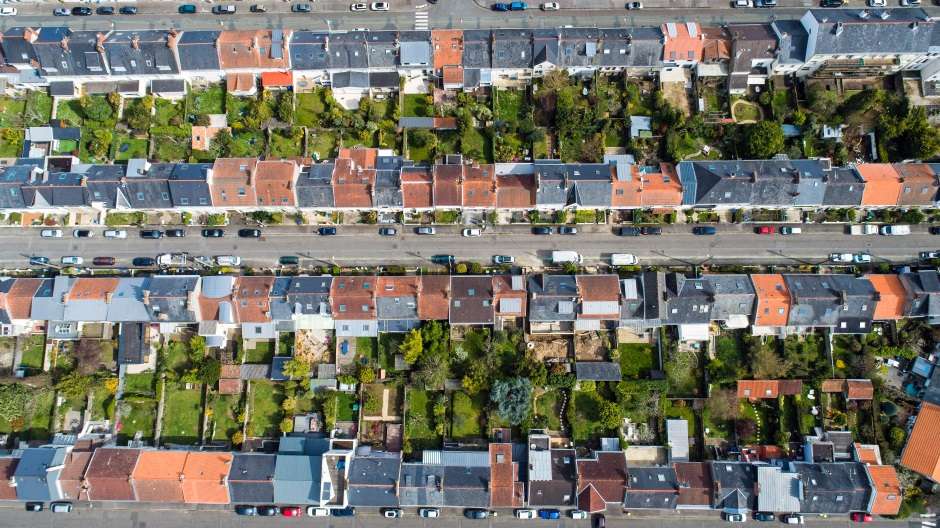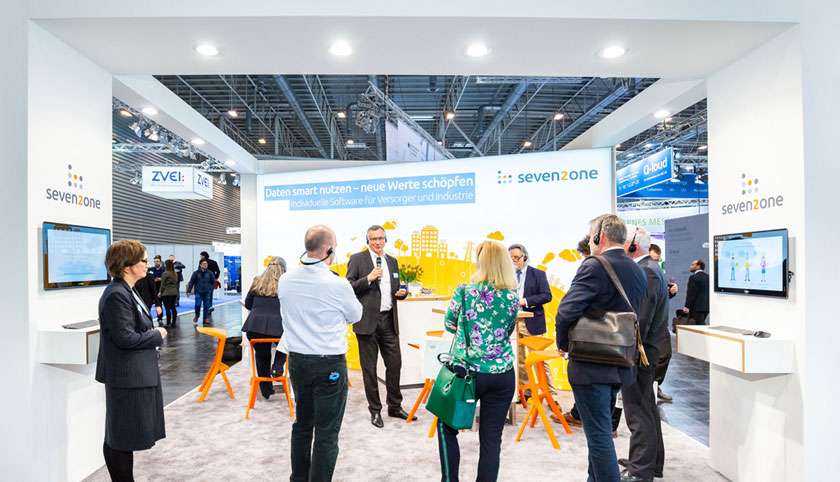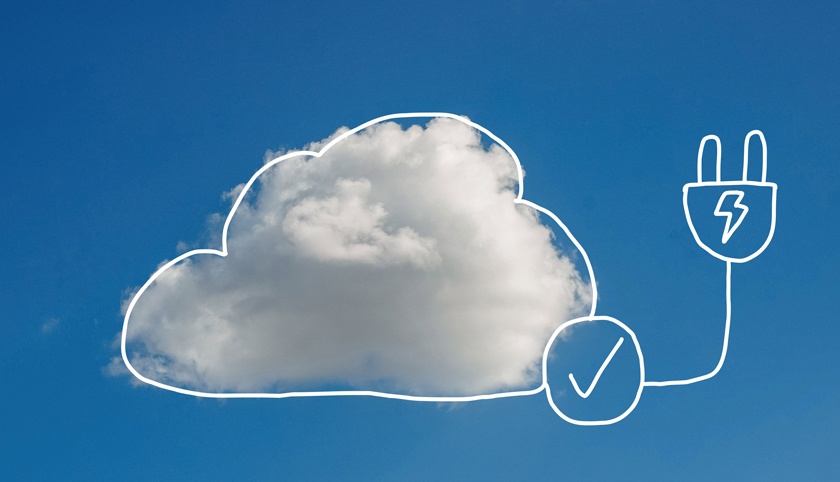Energy suppliers are using software solutions from Seven2one to tap into new energy management services in smart neighbourhoods. In an interview with trade magazine energiespektrum at E-world 2019, Dr Christoph Schlenzig explains exactly how this works.
How is your business involved in supplying neighbourhoods?
Seven2one develops software to help ensure the success of business models that relate to supplying neighbourhoods and the “smart neighbourhood”. Our focus is on backend applications that are able to manage electricity, heat, mobility and energy storage and that feature capabilities ranging from system optimisation to providing a single customer bill for all services.
If we think the energy transition through to its logical conclusion, achieving the climate protection goals will still require that we double the installation volume of photovoltaic and wind power plants. The energy turnaround must become more widespread and go where the consumers are: the cities. It is necessary to think about supplying electricity, heat and electromobility in an integrated manner. If you only view electricity consumption in isolation, it is impossible to completely consume electricity generated on site. On the other hand, if demand for heat and e-mobility is included, most of the photovoltaic electricity generated can be used directly in-house. The hot water tank of my heating system and the battery of my electric car are also ideal as storage units for photovoltaic electricity, which is subject to great fluctuations.
On the other hand, controlling washing machines, dryers, dishwashers and refrigerators will not catch on: it would be of little benefit to control these appliances, and controlling them would interfere too much with user behaviour and comfort. However, energy management doesn’t happen by itself; it needs to be optimally managed in an intelligent manner and on an automated basis. This requires that we use software that manages the systems, ensures that they work together correctly and takes care of settlement. This is precisely the software we make.

We integrate all the data that is needed to add value and complete a transaction. Our solutions always have three components: the data backend, the business processes of energy management, optimisation and settlement and a web portal for visualisation and interaction with users. For example, visualisation is about displaying electricity consumption, identifying the degree of self-sufficiency or making bills and statements available on the end-customer portal. What makes our software solutions special is that they are standardised function modules that are tailored to the business processes of the municipal utilities.
I believe that the construction, operation and maintenance of distributed renewable energy plants that are located at the customer site are a good way for municipal utilities to expand their service portfolio. Contact with the customers already exists, a relationship of trust is there, and it is possible to contact the customers directly and locally. And once energy management allows you to establish a link to the customer via a digital channel, it is a natural step to expand the energy business to include other services: Internet, telephony, cable TV, mobility services (such as car sharing) and security offers can be bundled into a single package. Energy management is what gets you in the door, so to speak. With such customisable “one-stop-shop” offers, a municipal utility can bolster customer loyalty and stand out from the competition. Seven2one offers integrated web-based solutions for digital marketing of such services.
…and this is added value that wouldn’t be possible with individual solutions?
Yes, exactly. White-label solutions are usually intended to be used with individual classes of plants of certain manufacturers, such as photovoltaic systems, batteries, heat pumps or heating systems. Therefore, you usually need several solutions like this if you want to have a variety of different offers in your portfolio. White-label solutions are inexpensive at the beginning because they scale with the number of users. However, they can become very expensive in the long run if many customers are successfully acquired. In addition, these solutions each store data in their own way, with the location of the data often no longer on the premises of the municipal utility but in the cloud of the solution provider. However, control over data and integrated control over all installations are key to optimising the cost-efficiency of the energy system. That is why I recommend that companies always bring their data back under their control and consolidate it in a central location. Only then are they in a position to create added value and to engage in targeted cross-selling.
What do I mean by that? A household with a photovoltaic system can only consume a portion of its electricity itself. If I know the photovoltaic generation and load profile of the household, I can contact the owner with a highly targeted offer for batteries and show them the percentage by which they can increase their degree of self-sufficiency as well as how much money they will save in this way. If the owner of the photovoltaic system also owns an electric vehicle, I can show them the best charging times for charging up the batteries with as much self-generated photovoltaic electricity as possible. I can only make offers like these if I have complete control over the relevant data.
How important will all of this be in 10 years’ time?
I believe that solutions for integrated energy management of photovoltaics, heating and electric car charging will be standard components of single-family houses a decade from now. It will take a bit longer in cities because of the complexity of laws relating to condominiums in apartment buildings as well as the current regulatory framework. The energy transition will further accelerate if electricity from rooftop photovoltaic systems ends up being significantly cheaper than electricity from the grid. In this circumstance, people will end up doing business with any enterprise that is able to offer the combination of photovoltaic system, heating integration and charging station bundled with a clever energy management system.
This is precisely where municipal utilities will be able to take advantage of an enormous opportunity. An offer like this is a complex service requiring many different skilled crafts and trades to work together. This is the strength of municipal utilities when compared to large energy suppliers that tend to think of their markets on a much larger scale. Municipal utilities are firmly rooted in their local market and know the tradespeople in their area and the situation on site. The local presence of the municipal utility also makes it the first point of contact when it comes to energy topics.
Can you give some examples of projects you are involved with?
We are currently integrating thermal storage heating systems into an energy management platform for municipal utilities such as Stadtwerke München, and we are also working with Stadtwerke Krefeld on a virtual power plant in order to assist with the energy transition on a local level. We also participated in two large research projects on energy management on large properties: The Smart Energy Hub project at Stuttgart Airport sought to convert the existing system into a forecast-based energy system that would holistically optimise generation, storage and consumption. The goal of the grid-control project, which involved grid operators such as NetzeBW, was to integrate flexibility into a rural grid in a manner conducive to efficient grid operations. The ultimate objective was to prevent the grid from shutting down in the event of oversupply of electricity.
Dr Christoph Schlenzig is the founder and Managing Director of Seven2one. Since October 2015, he has been a board member of Smart Grids Platform Baden-Württemberg and is involved in the regional energy network fokus.energie. He is also on the advisory board for the energy strategy of TechnologieRegion Karlsruhe.

(Image source: Armin Huber – energiespektrum)
(Header image: Armin Huber – energiespektrum)




0 Comments